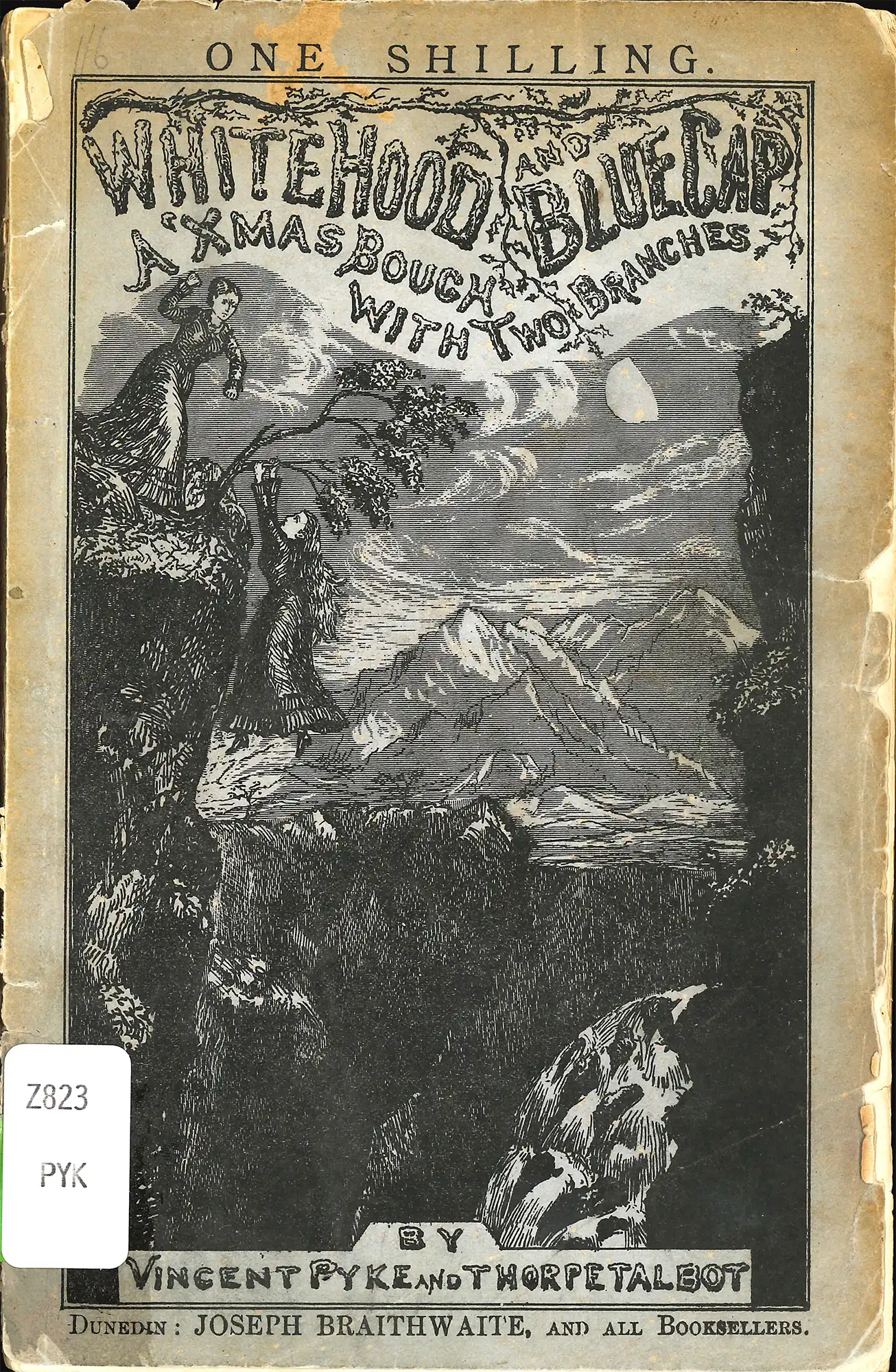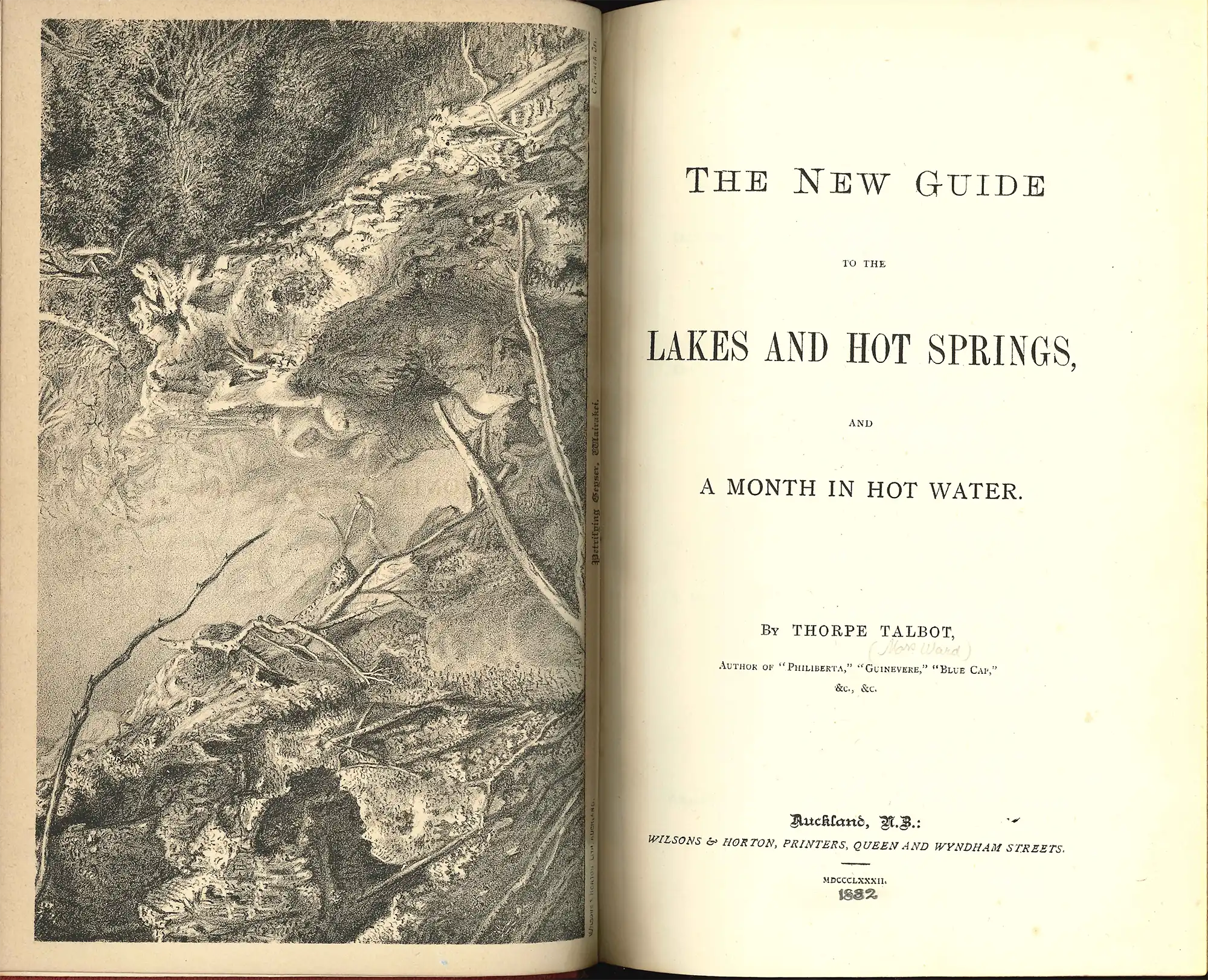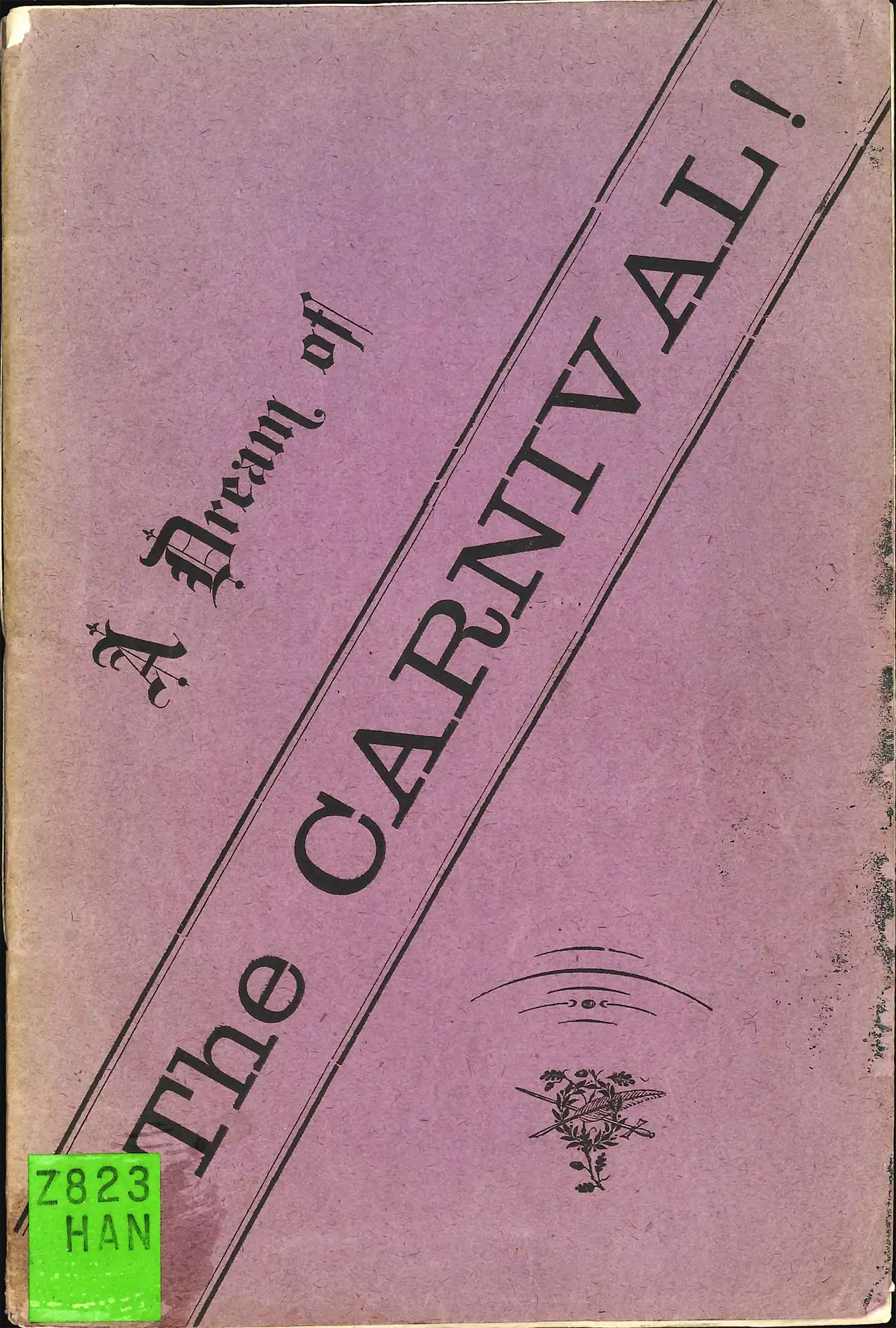Case 12
- Thorpe Talbot and S.J. Hancock

Thorpe Talbot. ‘Blue cap’ in White hood: and, Blue cap: a Christmas bough with two branches. Dunedin: Joseph Braithwaite, 1881.
Frances Ellen Talbot (1851-1923), later Ward, was a popular author of fiction and travel literature who wrote under the pseudonym Thorpe Talbot.
Born in Yorkshire, Talbot was educated in Australia before she settled in Dunedin. Her literary works include the tragic Gothic novella Blue cap, the award-winning novel Philiberta, first published as a serial in 1882, and a travel book about the North Island thermal region.
Described by Geoff Adams as “an early example of the emancipated woman” she signed two New Zealand women’s suffrage petitions, in 1892 and 1893, under the name Thorpe Talbot, which she had adopted in real life.
Talbot married Judge Charles Dudley Robert Ward in 1902 after the death of his first wife, prominent temperance leader and suffragist Anne Ward.

Thorpe Talbot. ‘Blue cap’ in White hood: and, Blue cap: a Christmas bough with two branches. Dunedin: Joseph Braithwaite, 1881.
Open image in new window

Thorpe Talbot. The new guide to the lakes and hot springs: and, A month in hot water. Auckland: Wilsons & Horton, Printers, 1882.
Frances Ellen Talbot (1851-1923), later Ward, was a popular author of fiction and travel literature who wrote under the pseudonym Thorpe Talbot.
Born in Yorkshire, Talbot was educated in Australia before she settled in Dunedin. Her literary works include the tragic Gothic novella Blue cap, the award-winning novel Philiberta, first published as a serial in 1882, and a travel book about the North Island thermal region.
Described by Geoff Adams as “an early example of the emancipated woman” she signed two New Zealand women’s suffrage petitions, in 1892 and 1893, under the name Thorpe Talbot, which she had adopted in real life.
Talbot married Judge Charles Dudley Robert Ward in 1902 after the death of his first wife, prominent temperance leader and suffragist Anne Ward.

Thorpe Talbot. The new guide to the lakes and hot springs: and, A month in hot water. Auckland: Wilsons & Horton, Printers, 1882.
Open image in new window

S.J. Hancock. A dream of the carnival. Dunedin: F. Humffray, Printer, 1886.
Selina Julia Hancock was born in Devonshire in 1827 and raised by her grandparents after the early death of her mother. She emigrated to New Zealand, arriving at Port Chalmers in 1873. She owned property in the Roslyn area and worked as a journalist or ‘literateur’ as she preferred to be known.
Hancock was a woman of strong convictions, and passionate about causes such as temperance and women’s suffrage. She was individually responsible for collecting four complete sheets of the 1893 Women’s Suffrage Petition – this is known because she annotated each of these sheets ‘Collected and witnessed by S. J. Hancock’.
Hancock published numerous moral tales in London in the 1860s, and continued to publish on various subjects in Dunedin during the 1880s. A dream of the carnival is a stern moral tale with religious and temperance themes.
She returned to London in 1904, and died there in 1906.


